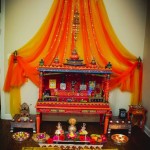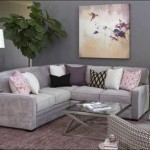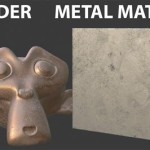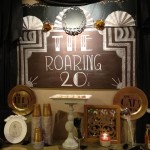How to Decorate the Dining Room Wall: A Comprehensive Guide
The dining room serves as a central gathering space within a home, often hosting meals, celebrations, and meaningful conversations. Consequently, the aesthetic appeal of this room significantly contributes to the overall ambiance of the home. Empty dining room walls can appear stark and unfinished, detracting from the room's potential. Thoughtful wall decoration can transform a dining room from a simple eating area into a stylish and inviting space. This article provides a comprehensive guide on how to decorate a dining room wall, covering various design elements and considerations to create a visually appealing and functional environment.
Before embarking on any decoration project, it is crucial to assess the existing room decor. This includes considering the color palette, furniture style, and overall architectural design. The wall decor should complement, not clash with, the existing elements. A cohesive design scheme ensures a harmonious and visually pleasing outcome. The size and layout of the room also play a significant role in determining the appropriate scale and placement of wall decorations.
Choosing the Right Art for Your Dining Room Wall
Art serves as a powerful tool for enhancing the aesthetic appeal of any room. In the dining room, art can create a focal point, introduce color, and reflect personal style. The selection of art should be carefully considered, taking into account the subject matter, size, and framing. Larger pieces of art generally work well on larger walls, while smaller pieces can be grouped together to create a gallery wall effect. The style of art should also align with the overall decor of the room. For example, abstract art may suit a modern dining room, while landscape paintings may be more appropriate for a traditional setting.
When choosing art, consider the color palette of the dining room. Art can be used to introduce accent colors or to complement existing hues. The frame that surrounds the artwork is also an important element. The frame should complement the artwork and the overall decor of the room. Simple, minimalist frames often work well in modern settings, while ornate frames may be more suitable for traditional spaces.
Beyond traditional paintings and prints, consider alternative forms of wall art. This could include sculptural pieces, metalwork, or even textile art. These unique options can add texture and visual interest to the dining room wall. Furthermore, consider commissioning a custom piece of art that is specifically designed to fit the space and complement the existing decor. This allows for complete control over the subject matter, size, and style of the art.
Utilizing Mirrors to Enhance Space and Light
Mirrors are a versatile and effective tool for decorating dining room walls. They can create the illusion of more space, amplify natural light, and add a touch of elegance to the room. Strategic placement of mirrors can dramatically transform the ambiance of the dining room. A large mirror placed opposite a window can reflect the outdoor scenery and bring natural light into the room.
The size and shape of the mirror should be proportionate to the wall space. A large, rectangular mirror can work well on a long wall, while a smaller, round mirror may be more suitable for a smaller wall. Consider using multiple smaller mirrors to create a gallery wall effect. This can add visual interest and depth to the wall. The frame surrounding the mirror is another important element. Just as with art, the frame should complement the overall decor of the room. Ornate frames can add a touch of luxury, while simple frames can create a more modern look.
Beyond traditional flat mirrors, consider using textured or patterned mirrors. These can add a unique visual element to the dining room wall. Antique mirrors, with their aged appearance, can also add character and charm. Furthermore, consider using mirrored tiles to create a mosaic effect. This can be a particularly effective way to add sparkle and visual interest to a small wall.
Incorporating Functional and Decorative Elements
Beyond art and mirrors, there are numerous other options for decorating a dining room wall. Functional and decorative elements can be combined to create a visually appealing and practical space. This could include shelves, cabinets, or even a built-in buffet. These elements not only enhance the aesthetic appeal of the room but also provide valuable storage space.
Shelves can be used to display decorative items such as vases, sculptures, or books. They can also be used to store everyday items such as dishes and silverware. The key is to create a balanced and visually appealing arrangement. Avoid overcrowding the shelves and use a variety of textures and materials to add visual interest. Cabinets can be used to store larger items such as serving dishes and linens. They can also be used to conceal clutter and maintain a tidy appearance.
Consider installing a wine rack or a bar cabinet in the dining room. This can be a stylish and practical way to store and display wine and other beverages. A chalkboard wall can also be a fun and functional addition to the dining room. It can be used for writing menus, leaving messages, or even creating artwork. Furthermore, consider incorporating plants into the dining room decor. Potted plants can add a touch of nature and freshness to the space. They can also help to purify the air and create a more relaxing atmosphere.
The use of wallpaper or wall decals is another way to add personality to a dining room wall. Wallpaper can add texture, color, and pattern to the room. Wall decals are a more temporary option that can be easily removed or changed. Choose a wallpaper or wall decal that complements the overall decor of the room and reflects personal style. Consider using a textured wallpaper to add depth and visual interest to the wall. Alternatively, a patterned wallpaper can create a focal point and add a touch of drama to the room.
Lighting plays a critical role in highlighting wall decor. The type and placement of lighting fixtures can dramatically affect the appearance of the dining room. Consider using spotlights or track lighting to illuminate artwork or other decorative elements. A chandelier can also be a stunning focal point in the dining room. The lighting should be adjustable to create different moods and atmospheres. Dimmer switches can be used to control the intensity of the light and create a more intimate setting.
When decorating a dining room wall, consider the scale and proportion of the elements. The wall decor should be proportionate to the size of the room and the height of the ceiling. Avoid using excessively large or small items that can overwhelm or underwhelm the space. The placement of the wall decor is also important. Consider the sightlines and traffic flow in the room. Ensure that the wall decor does not obstruct the view or create a hazard.
Finally, remember to personalize the dining room wall decor to reflect individual tastes and preferences. The dining room should be a space that is both functional and aesthetically pleasing. Incorporate elements that create a warm, inviting, and comfortable atmosphere. This could include family photos, travel souvenirs, or other personal items that hold special meaning.

Wall Decor Options For This Blank Dining Room Designed

23 Dining Room Wall Décor Ideas

Dining Room Wall Decor Ideas For Your Home

12 Stunning Modern Dining Room Wall Decor Ideas Designcafe

Dining Room Wall Accent Ideas How To Pick Your Vibe

Elevate Your Dining Room 9 Must Try Wall Decor Ideas

Dining Room Wall Ideas That Will Make A Big Statement Decoist

25 Wall Decor Ideas To Spruce Up Your Dining Room Society6

20 Ways To Dress Up Dining Room Walls Wall Decor

54 Simple Dining Room Wall Decor Ideas Displate Blog
Related Posts







